The danger becomes even greater amid rising sea levels
Faced with precarious living conditions, residents of the Carrefour coast are pushing back the sea with rubbish and embankments to plant houses.

A family gathers in their courtyard on the coast of Carrefour, surrounded by tires and clutter. | © Kenley Augustin
In the area, several neighborhoods are affected by this phenomenon literally called “fè tè” (or make land).
In Côte Plage 16, Arcachon 32, 34 and Lamentin 54 for example, people settle in these houses vulnerable to flooding, built in the water disregarding construction standards, with the extensive use of trash putting marine ecosystems at risk of destruction.

A ‘peristyle’ on the coast of Carrefour, surrounded by rubbish as a fence.
Chimène, a 35-year-old mother who has lived in the area for more than ten years, owns a house there.
“We added soil here, but a few years ago it was washed away by a cyclone,” says the woman, pointing to the site of a hole in the ground that her family had to fill with huge trucks of soil in order to build the shack which today houses five people.
Around Chimène’s home, on Tuesday, January 9, 2024, we could make out several small concrete rooms with decrepit walls and others, covered with rusty sheets, tarp or plastic. The less fortunate make use of dry coconut tree branches and other leftover materials.

A little house planted in the middle of heaps of garbage on the coast of Carrefour.
According to specialists, these slums illustrate the housing crisis in Haiti – a crisis which accelerated since the devastating earthquake of January 12, 2010.
Read also: Ki kote nan Pòtoprens ki pi an danje si ta gen yon lòt tranblemanntè ?
The only National Housing and Habitat Policy (PNLH) was developed in 2013 by the Housing and Public Buildings Construction Unit (UCLBP).
Pushed by the insecurity strangling the metropolitan region, former inhabitants of slums like Canaan find refuge in these slums.
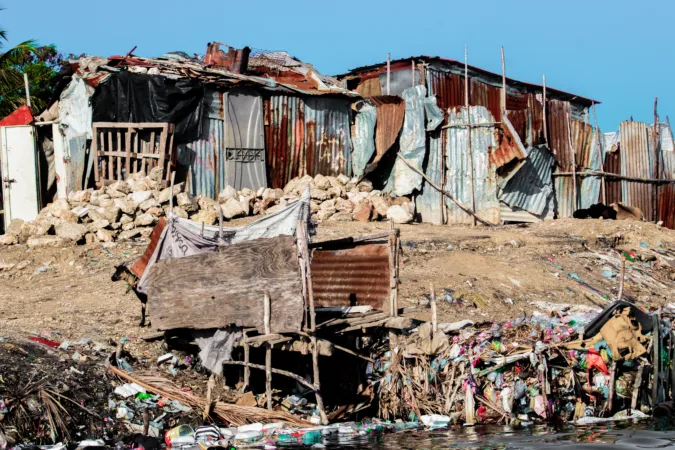
Cabins in the background and a « toilet » in the foreground dumping fecal matter into the sea.
The practice is growing, but it remains illegal.
According to the 1987 Constitution, the right to property does not extend to the coastline, springs, rivers, streams, mines and quarries. These places are part of the public domain of the State.
“The public domain of the State is inalienable and cannot be rented or sold,” recalls Michèle Oriol, executive secretary of the Interministerial Committee for Territorial Planning (CIAT).
According to Oriol, we are facing “an unconstitutional and illegal phenomenon,” which has accelerated over the last 25 years.
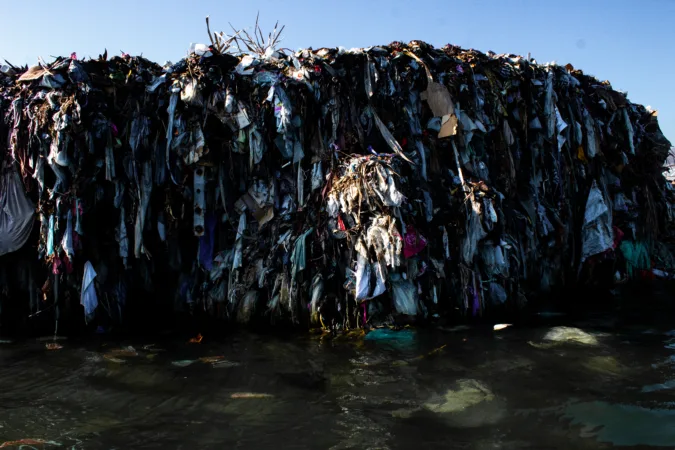
Piled-up waste, including used tires, aimed at reducing the power of the waves, pushing the sea back for « fè tè ».
Despite the risks, CIAT can only draw the attention of stakeholders. The law does not grant the entity “the authority to act against abuses,” specifies Oriol.
In the absence of state intervention, citizens like Roussel Pierre cannot wait.
For four years now, this father and mason, pays 15,000 gourdes per year for a portion of land created with the “fè tè” practice to house his family of five in Arcachon 32.
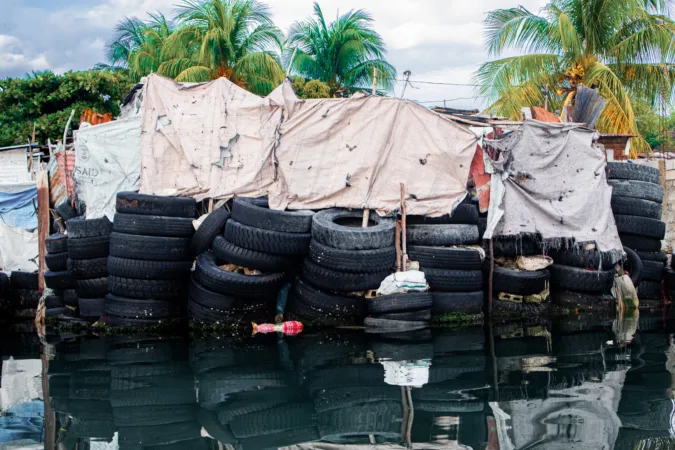
Tires and debris used as a fence surround a house built on the coast of Carrefour.
He says he almost never works due to insecurity. But at least his children will be sheltered from the rain in the small room he built himself on the land, made of sheet metal and formwork wood.
“I don’t like where I live, but this is what my economic level affords me,” Pierre told AyiboPost.
For “fè tè”, the inhabitants build barriers with wooden stakes on which they pile used tires and rubbish to slow down the force of the waves.
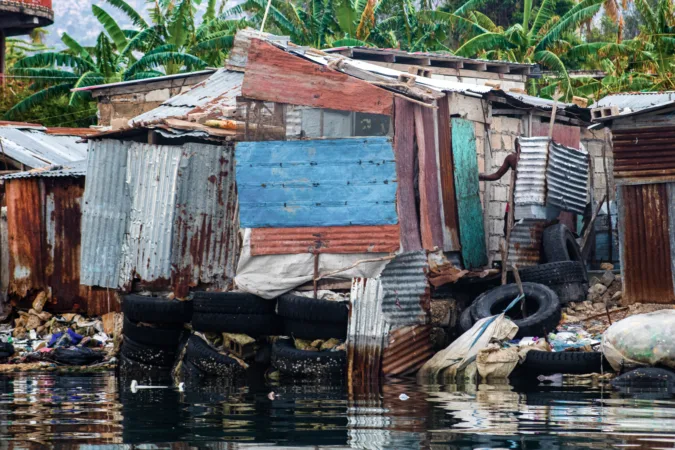
Homes erected amidst waste and tires on the Carrefour coastline, illustrating the practice of « fè tè. »
Then, they add aggregate and alluvial backfill to raise the area above sea level.
The trash makes the air difficult to breathe. According to specialists, this practice also makes soils potentially liquefiable, when they lose their potency following water saturation.
The danger becomes even greater in the context of rising sea levels due to climate change and the increase in extreme weather events.
This global phenomenon further threatens poor countries like Haiti, with 27% of its population living in coastal areas.
Read also: Haïti sous les griffes des changements climatiques
According to Christin Calixte, agronomist and holder of a specialization in environmental management, the “fè tè” phenomenon is a “maladaptation”, that is to say an adaptation action which increases the risk of harmful effects linked to climate.
According to the former executive of the Ministry of Agriculture, these urban practices, which do not respect the technical standards of land use planning, “represent a threat to the lives of people, the environment, the mangrove ecosystem and affect aquatic fauna.”
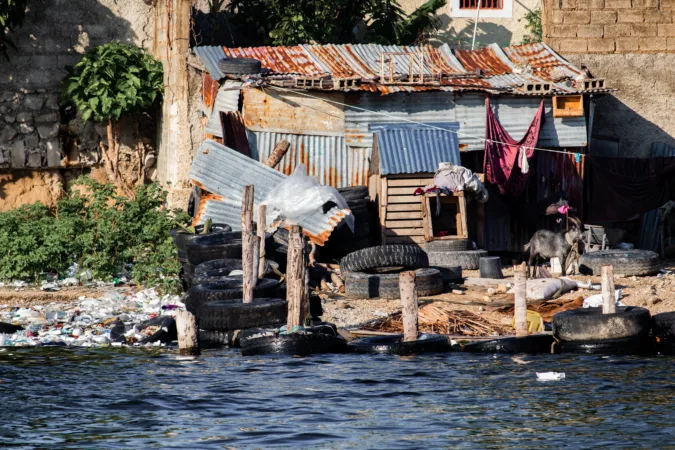
At Côte Plage 28, a corrugated iron shack is erected on piles of miscellaneous objects, including waste and tires, as part of the « fè tè » practice.
Last year, the house built on the seaside of Carrefour by Aulyraude Moïse was flooded by runoff water which accumulated there.
The video editor and the three other members of his family living in the home know the risks. Specifically, he complains about the trash nearby, as well as the habitual flooding during downpours.
But, like hundreds of his neighbors, Moïse cannot even consider moving, “for lack of economic means.”
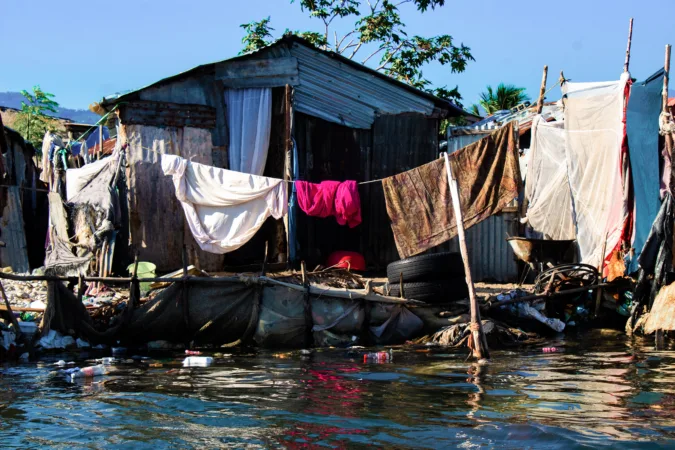
Houses built within an environment littered with debris and tires on the coast of Carrefour, reflecting the implementation of the dangerous practice « fè tè. »
By Kenley Augustin & Jérôme Wendy Norestyl
English translation by Sarah Jean.
Cover image: A hut built on piles of garbage on the coastline of Carrefour.
Photos are by Kenley Augustin
Stay in touch with AyiboPost through :
► Our WhatsApp channel : click here
► Our WhatsApp Community : click here
► Our Telegram canal : click here

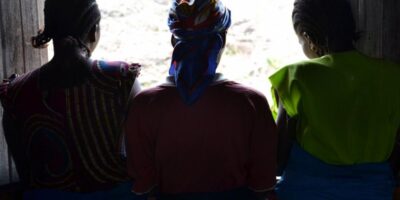





Comments